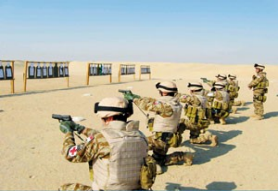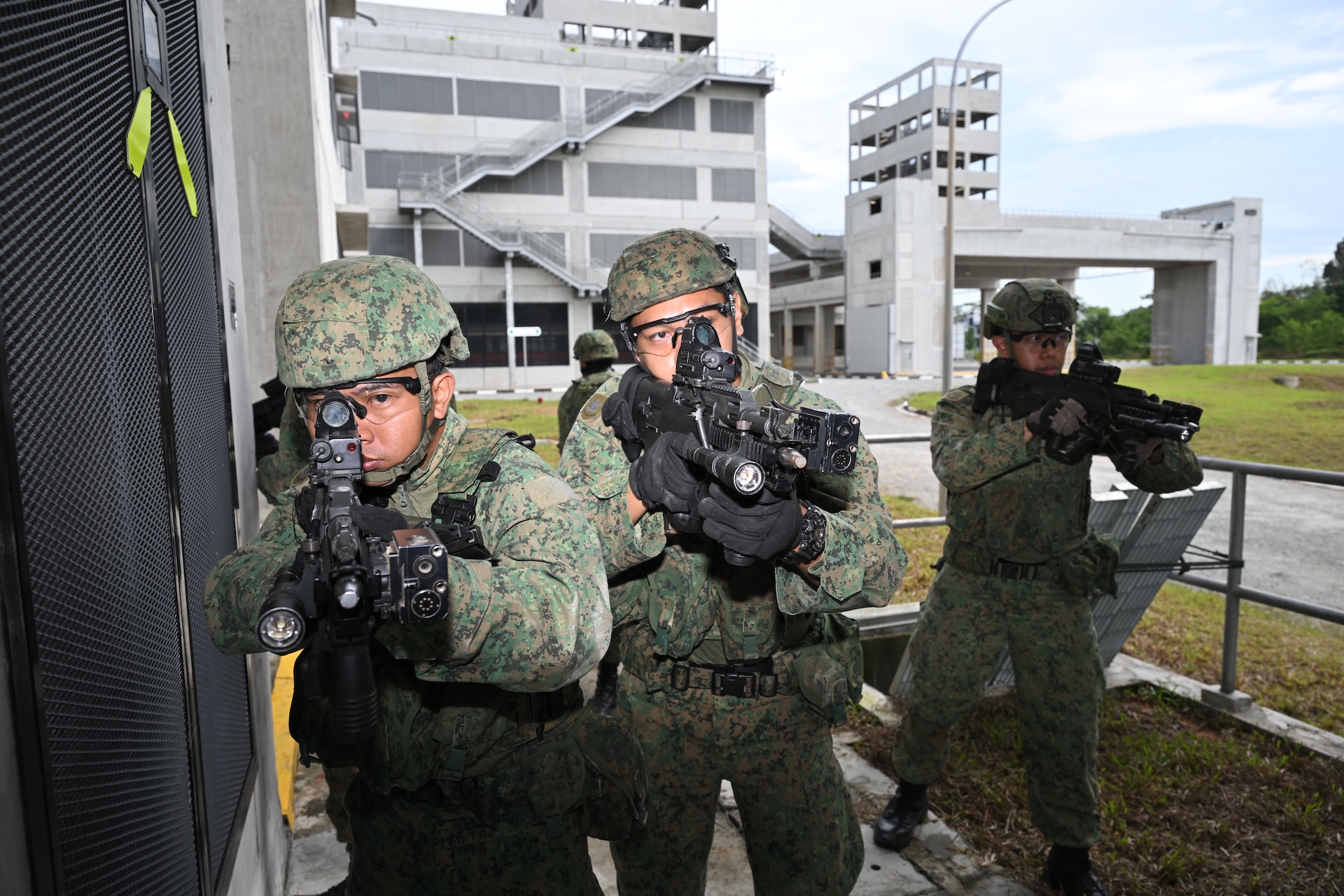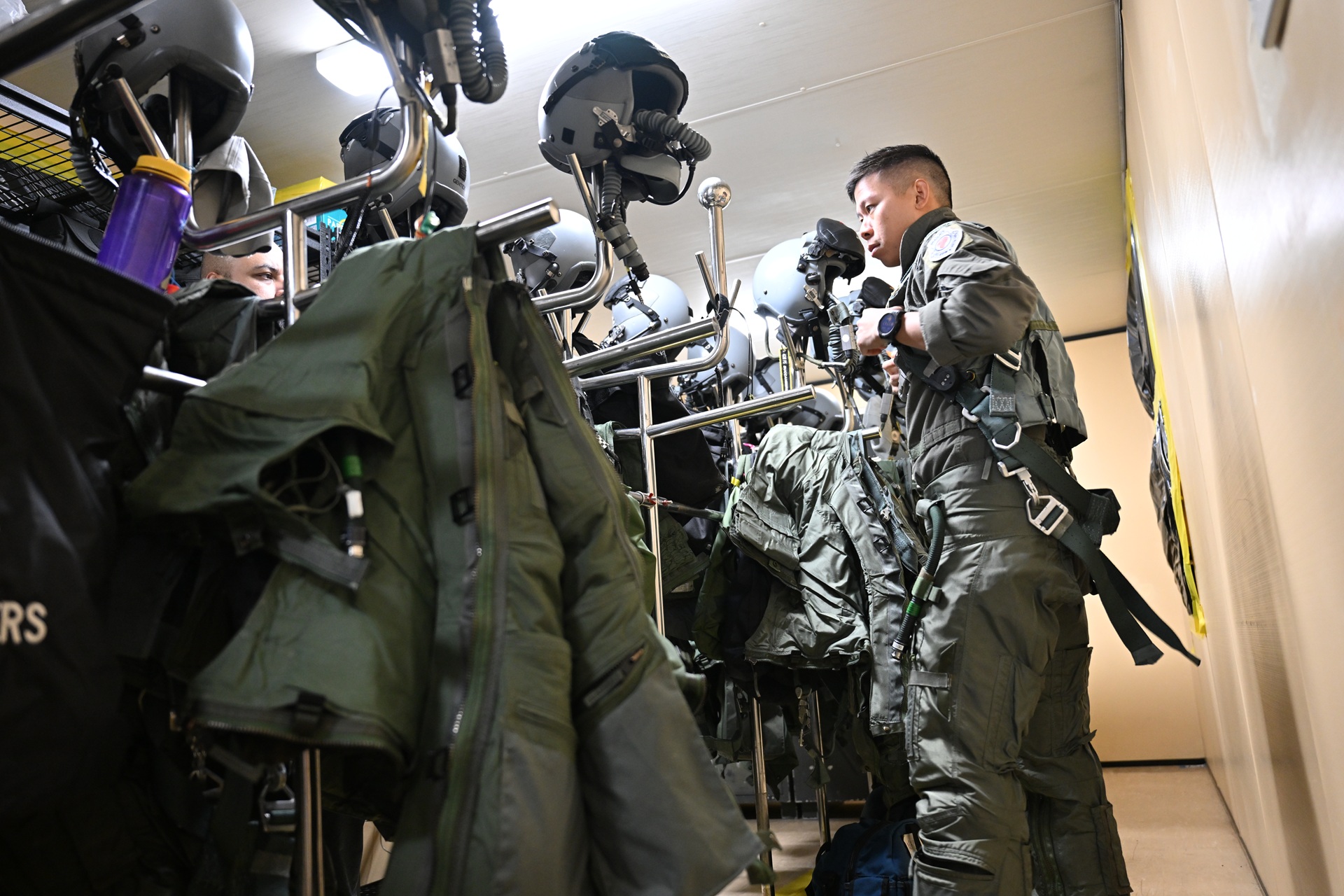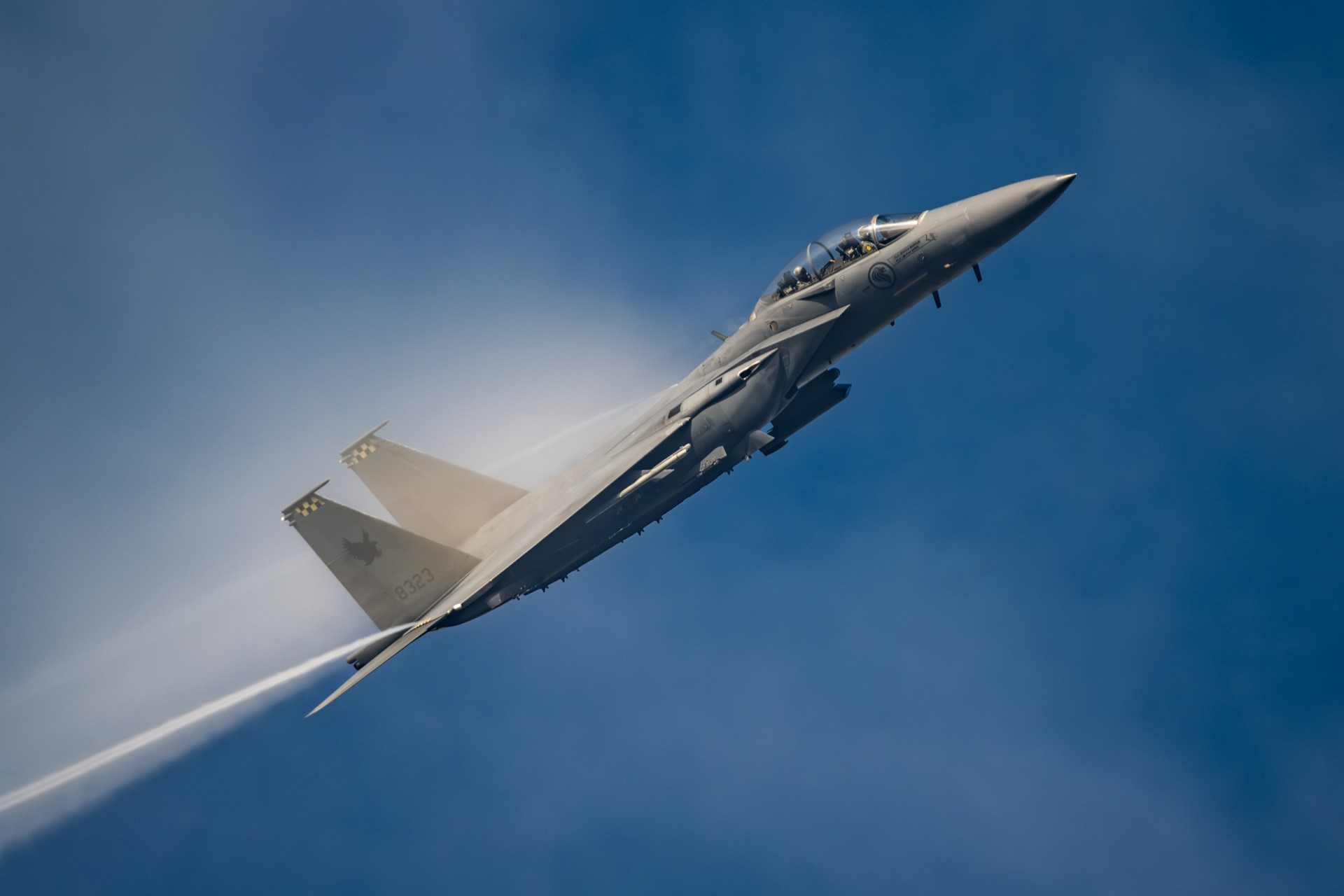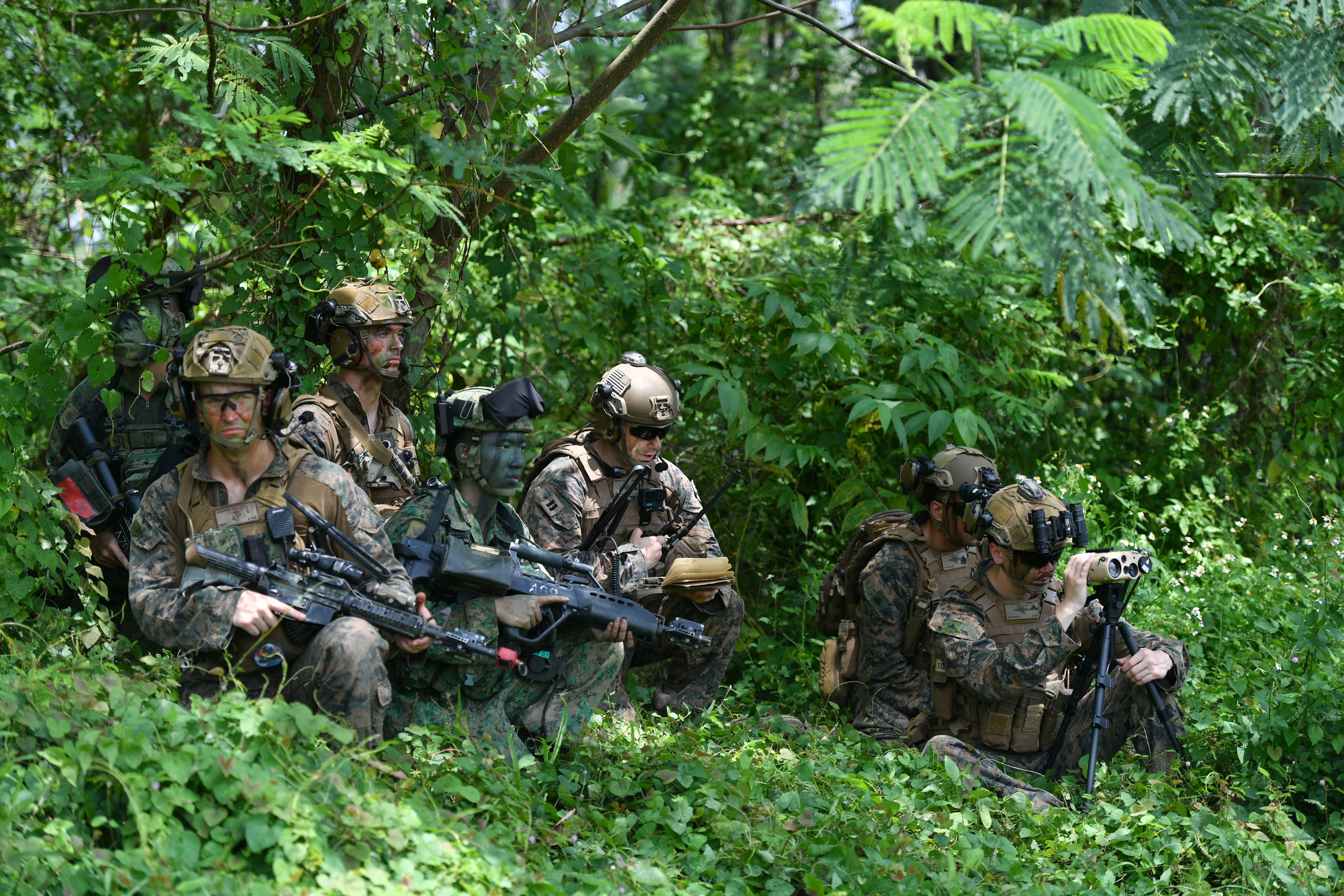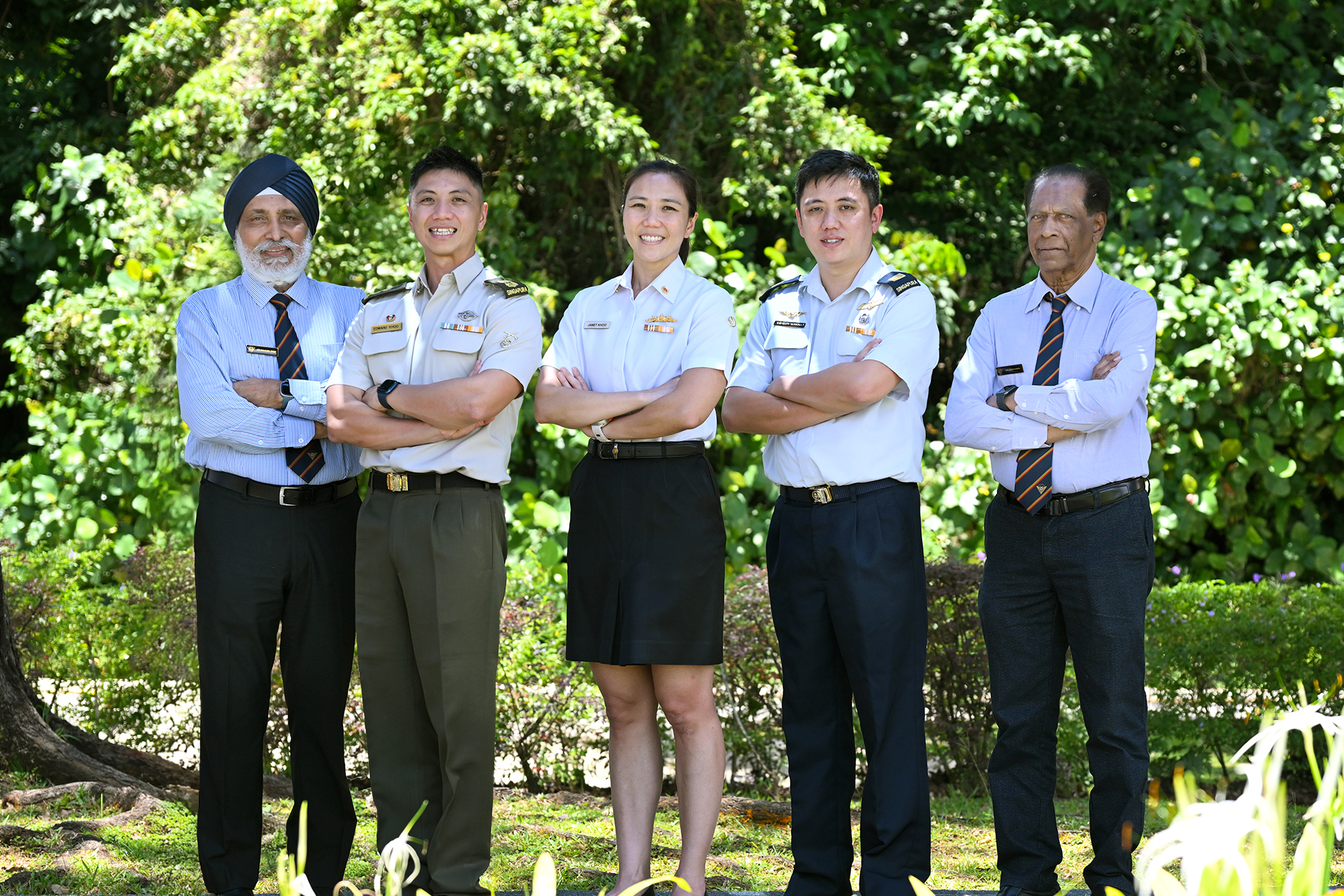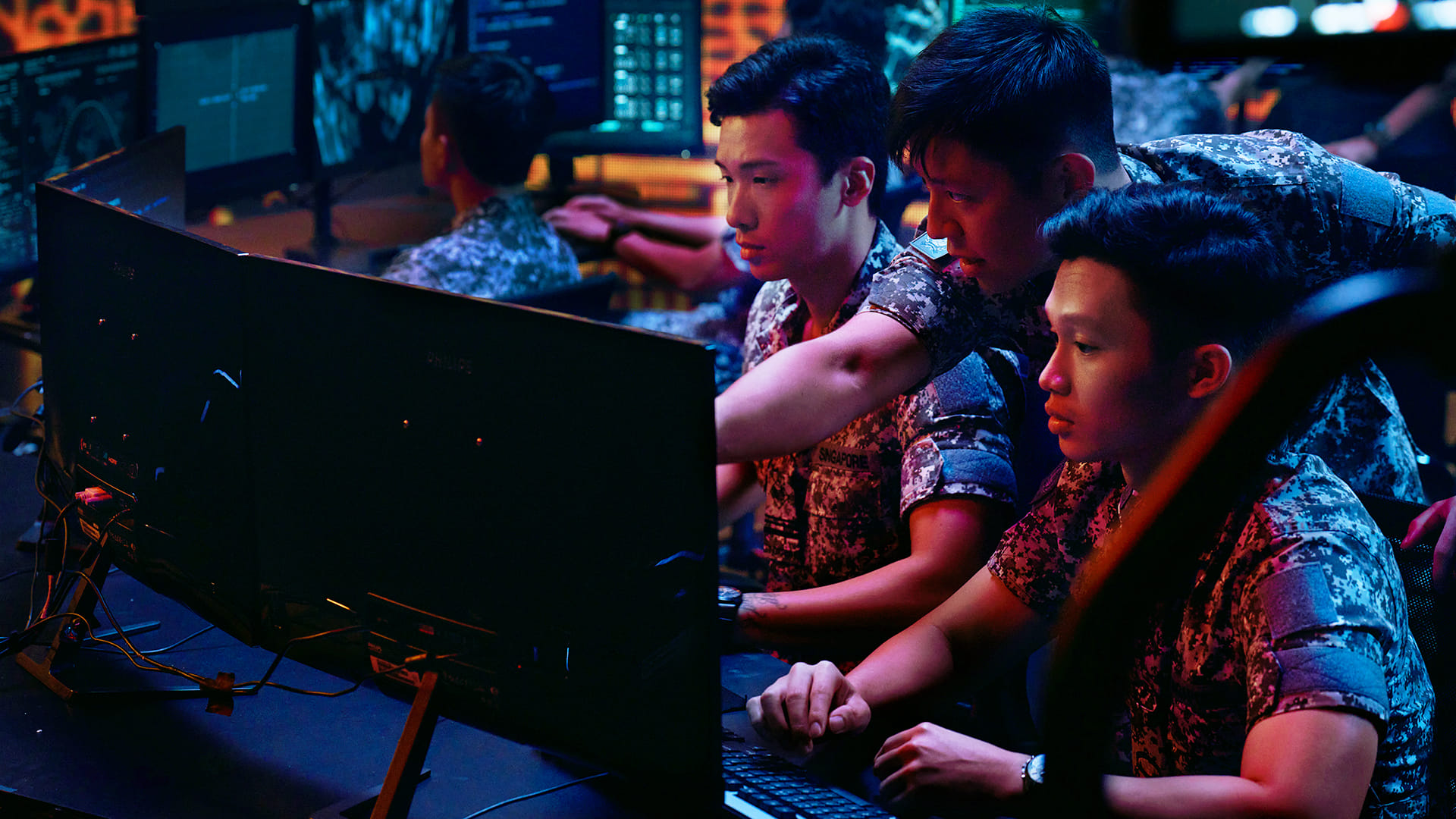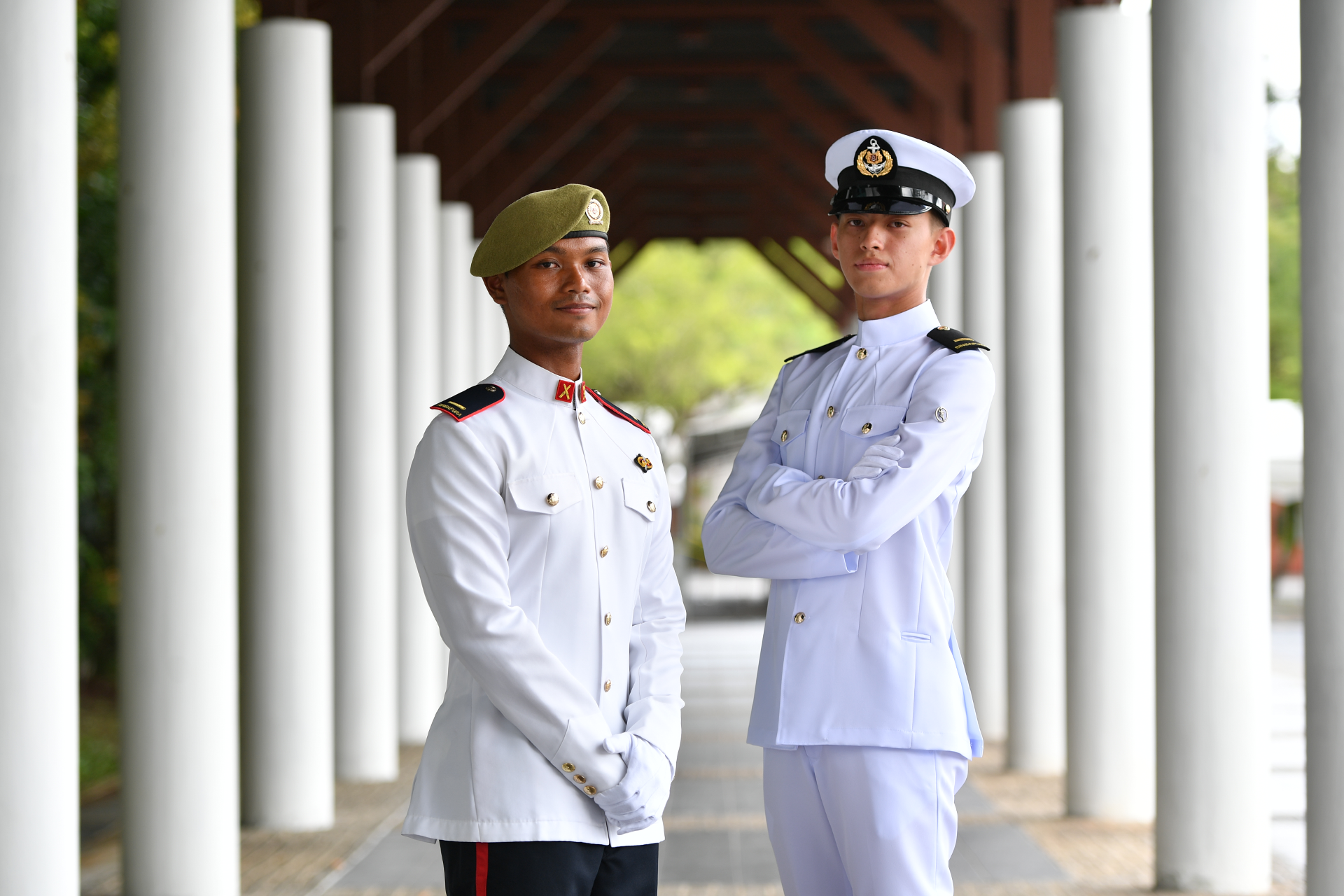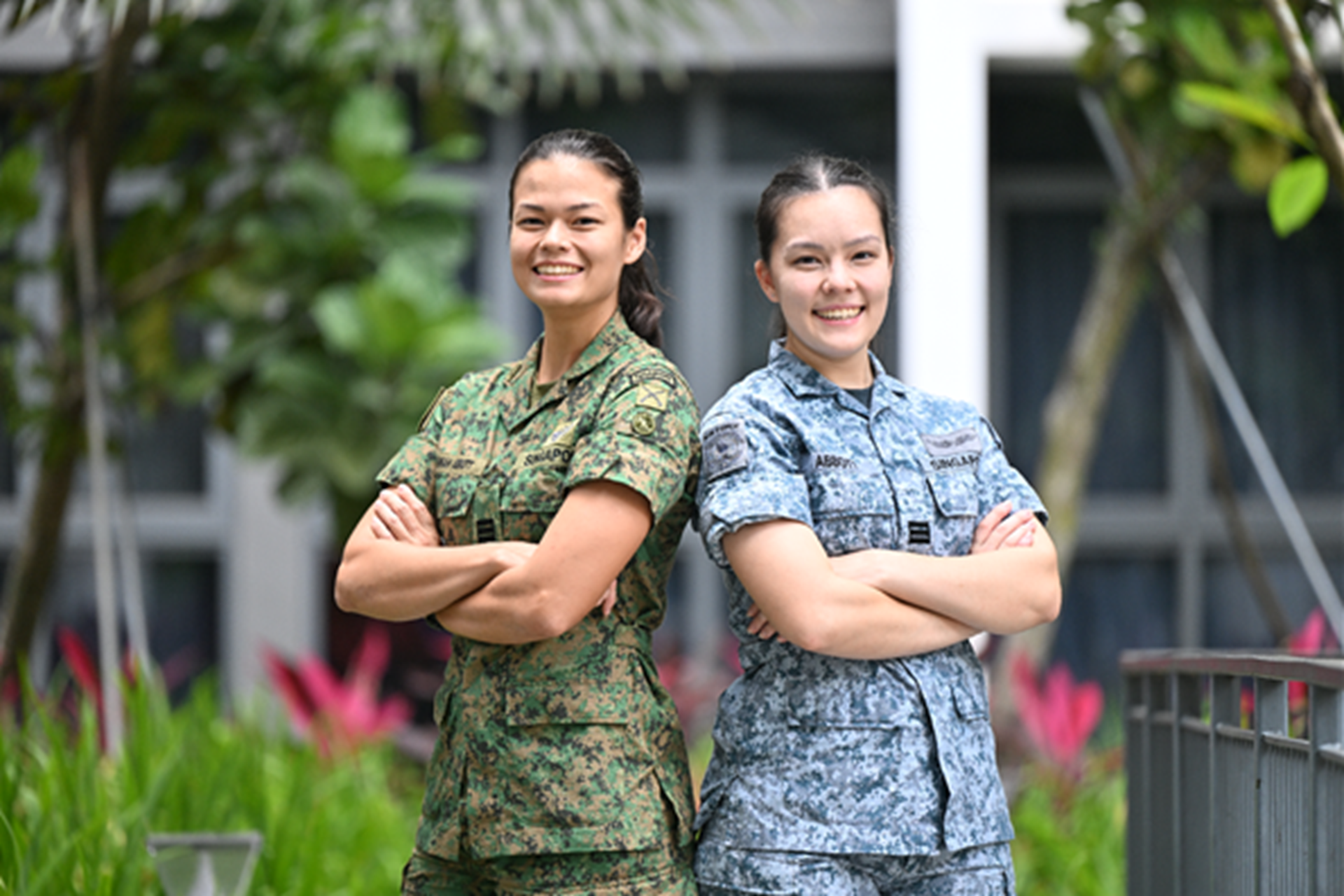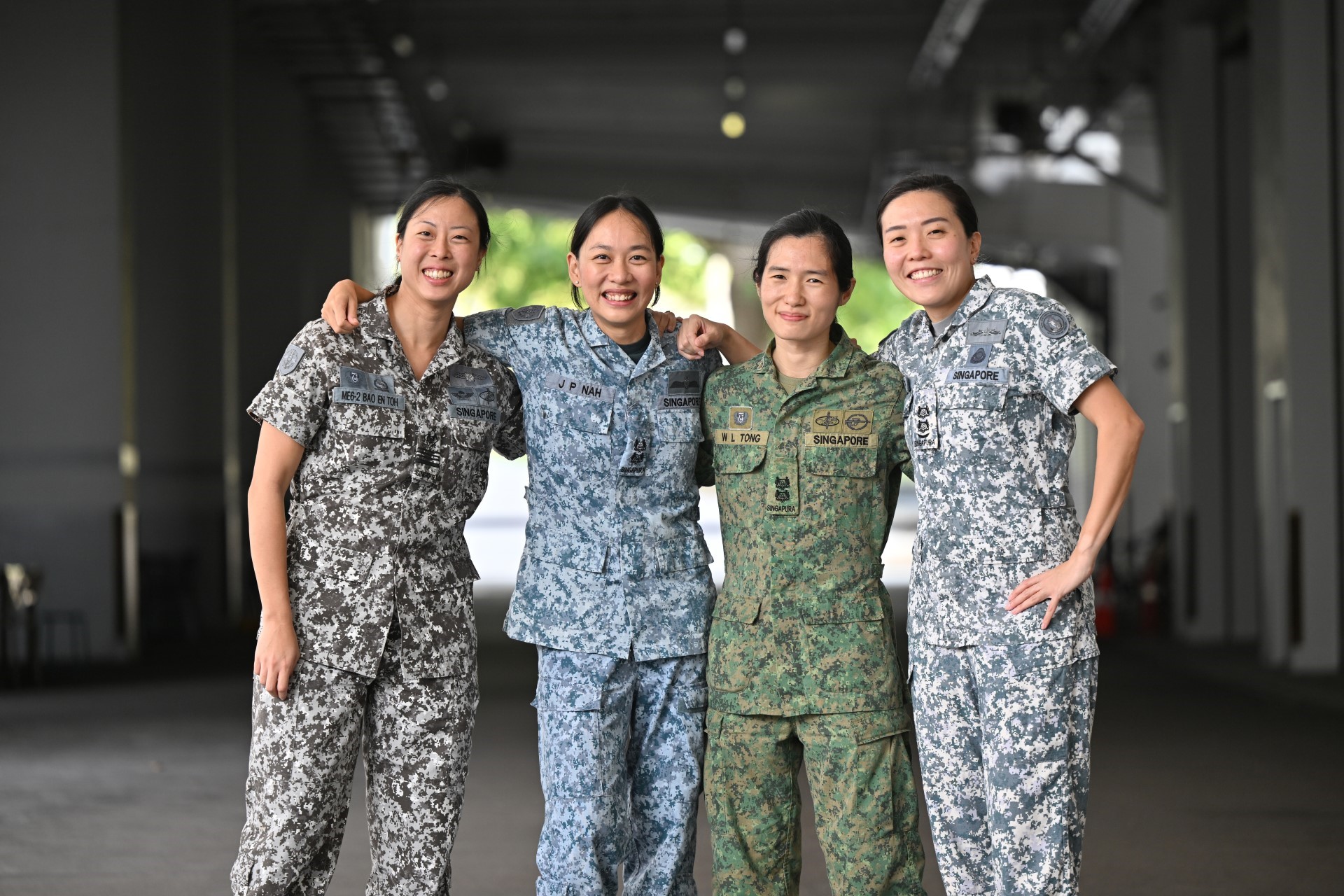AN SAF FOR ALL SEASONS
PHOTO // PIONEER Photographers and Courtesy of the Singapore Army
With the global financial meltdown and rampant terrorist acts playing out across the world, existing security concerns are being compounded by uncertainties. No country is immune to the political and social stresses that may escalate with these concerns, thus heightening the prospects for turmoil and security deterioration.
Now, more than ever, the Singapore Armed Forces (SAF) needs to stay strong and capable to give Singaporeans the assurance that it is ready and able to confront these challenges at all levels and at all times to ensure continued peace and stability.
It would be foolhardy to think that to keep Singapore safe we need only look inwardly at homeland defence and protect what is within our borders.
Today's multi-faceted security threats come from all directions and include non-traditional concerns like resource challenges, climate change, pandemics and cyber warfare.
Terrorism, for one, transcends all boundaries and remains a common threat to all nations, as evidenced by the recent attacks in Mumbai.
Even in Singapore, we were struck by the senseless brutality of it all as we mourned the loss of one of our own. Terrorism is a global problem that will not disappear any time soon, and to counter it effectively requires the sustained cooperation and efforts of all nations.
For a safer world for all
In recognition of this global issue, Singapore remains committed to doing its part for the multinational stabilisation and reconstruction efforts in Afghanistan, a country at the frontline in the fight against transnational terrorism.
Extremists have made use of an unstable Afghanistan as a safe haven to train terrorists, and to export violence and terror to other countries, including Singapore.
On 18 Nov 08, the SAF sent a 20-man medical team to Afghanistan. The team, comprising medical and nursing officers, was deployed in the field hospital in Tarin Kowt, the provincial capital of Oruzgan, for three months.
"We shouldn't take our peace for granted," emphasised medical team leader Major (Dr) Adrian Tan. "We have seen down here (in Oruzgan) the effects of war on the local population and how it destroys the lives of people, how it destroys the country, and we cannot - should not - ever allow that to happen to Singapore."
A second 20-man team will replace the first team in February and serve in the field hospital till May. The team will provide primary health care and ward capability at the field hospital in support of the Australian and Dutch forces deployed there.
The Oruzgan mission was the SAF's second deployment to Afghanistan in 2008. The SAF had earlier deployed a six-man construction engineering team to the Bamiyan province, located in Central Afghanistan, to supervise the construction of a Regional Health Training Centre.
In fighting terrorism, the SAF does not work alone.
In Bamiyan, the SAF team operated as part of the Provincial Reconstruction Team (PRT) led by the New Zealand Defence Force. For the Oruzgan deployment, the SAF team was assisted by the Australian Defence Force in its preparations.
The assistance reflects the close bilateral military relationship and the political support shared by both countries. In fact, Singapore just signed a memorandum of understanding on defence cooperation with Australia in 2008.
Singapore began contributing to United Nations-sanctioned international peace support missions in 1989, when it took part in the UN mission in Namibia. Despite being a small country, Singapore contributes within its means to such efforts.
The SAF has sent military observers, election monitors, medical and air support to help UN-sanctioned international peace support missions in the Gulf, Afghanistan, Timor Leste and Nepal, among other places.
As ready as can be
In today's complex security landscape, one can never be completely certain of preventing an attack. Thus, Singapore must be vigilant at all times and build an SAF that possesses the full spectrum of capabilities to fight decisively in war and respond flexibly in peacetime.
In the continuous spiral of transformation, the 3rd Generation SAF has been organised and developed to meet a wide range of potential dangers - from threats to our sovereignty and territorial integrity, to dealing with low-intensity conflicts, to fighting terrorism and conducting humanitarian and disaster relief and peace support operations.
In achieving that goal, the SAF places much emphasis on being integrated and networked, technologically advanced, innovative and agile, as well as being focused on people and values.
The operationalisation of the 3rd Generation SAF is well on track with the acquisition of new platforms, the training of personnel and the validation of new fighting concepts.
Change is the only constant
The SAF has been making steady investments in cutting-edge capabilities to enable it to fight with speed and precision, and in an integrated fashion. The first of the Republic of Singapore Air Force's (RSAF's) 24 Boeing F-15SG multi-role fighter jets was officially rolled out at the Boeing plant in St Louis, Missouri, United States, in November 2008.
The aircraft is considered one of the top fighters in the world, scoring 104 wins against zero losses in aerial combats worldwide, and the SG variant is the most advanced and technologically-sophisticated F-15 built to date.
"As the mainstay of our next generation multi-role fighter aircraft, the F-15SG will enhance our air defence, air superiority and strike capabilities," said Chief of Air Force Major-General Ng Chee Khern.
Singapore's networked island air defence will be further bolstered by the introduction of four Gulfstream G-550 Airborne Early Warning Aircraft from 2009. They will provide improved surveillance for the RSAF, and enhance Singapore's air defence capabilities.
Complementing the G-550s are the Republic of Singapore Navy s stealth frigates, with the final two, RSS Supreme and RSS Stalwart, being commissioned in January. This brings the total number in operational service to six.
The frigates' longer sustainability at sea allows to act at extended ranges, enabling them to provide a wider and better protection of Singapore's waters and sea lines of communications. They also feature advanced weapon systems such as the Aster Anti-Air missile and the Sikorsky S-70 naval helicopter.
In April 2008, RSS Intrepid - one of the six Formidable-class frigates - carried out a successful test-firing of the Aster Anti-Air missile in the Mediterranean Sea, demonstrating the frigates' anti-air and anti-missile capability.
Prudent spending a necessity
The Ministry of Defence (MINDEF) carefully scrutinises every acquisition to determine need, before options are evaluated and the most cost-effective solution chosen.
While the government is prepared to spend up to 6 percent of Singapore's gross domestic product on defence, MINDEF maintains a very rigorous system of controls to ensure that the money that has been allocated is used prudently.
For instance, the SAF seeks to extend the life of its equipment by maintaining them well and upgrading them where possible. Equipment and systems are also well-integrated so they can be utilised fully.
When there is truly a pressing need to make a purchase, the latest model is not always chosen.
For example, second-hand German Leopard 2A4 Main Battle Tanks and Swedish Vastergotland-class submarines were bought and upgraded with modern systems instead.
Integration of systems
After acquiring new capabilities, the next step is to integrate them into operations and realistic battlefield scenarios. Since 2005, the SAF has been validating and refining its fighting concepts in large-scale overseas exercises.
The SAF's capabilities in air-land integration and networked air defence reached new levels of maturity in the latest edition of Exercise Lightning Warrior in 2008 when operational capabilities in engaging both static and mobile targets were validated.
Woven into the synthesised air-land situation picture were constant real-time data feeds from weapon-locating radars and unmanned aerial vehicles, which commanders can view and analyse at the Division Strike Centre (DSC). The DSC, which stands at the heart of the network of sensors and shooters, makes use of these assets in planning, coordinating and executing precision fires.
This tight web of sensors and shooters, said Exercise Director, then-Colonel (COL) Lim Teck Yin, brings support fire in the shortest possible time in addition to raising efficiency and reducing collateral damage.
Not only does it integrate the division headquarters with units on the ground, it also strengthens working ties between the Army and the Air Force, he added.
Said Exercise Air Director COL Yeo Yee Peng: "For mobile targets, there is very little time to find and engage them, so the window for error is very small. Today, we can do it in seconds...because we have complete situational awareness from both the air and land perspectives."
As for Exercise Wallaby 2008 in Australia, the capabilities of the Air-Land Tactical Control Centre, which effectively increases the shared situational awareness of all the service elements involved in integrated missions, was demonstrated. The Leopard 2A4 also featured in an integrated live-firing exercise for the first time.
Revamp to keep pace
To meet this increase in operational tempo and to have the added flexibility and scope to assimilate new technology to support SAF-wide operations, the Services have been restructured accordingly.
In August 2008, the RSAF completed the most extensive revamp of its command structure to date by regrouping its aircraft, radar and air defence systems into five mission-oriented functional commands to deliver firepower more quickly and to provide more devastating firepower.
Instead of grouping according to location, man and machine were grouped according to the missions they carry out. This allows the RSAF to be more responsive and nimble, regardless of whether they are flying local sorties, participating in high-risk operations in the Gulf or taking part in humanitarian relief missions in disaster zones.
As for the Navy, to respond better to the dynamic maritime security environment, the soon-to-be-formed Maritime Security Task Force (MSTF) will tap capabilities from different national maritime agencies and international partners.
The Information Fusion Centre, as part of the upcoming Changi Command and Control Centre, will support the MSTF by promoting international cooperation and inter-operability.
Focus on the individual soldier
The operationalisation of the 3rd Generation SAF has a direct impact on the individual soldier. The Advanced Combat Man System (ACMS), Murai Urban Training Facility (MUTF), and the new SAF combat uniform will enhance the individual soldier's capabilities in an urban environment, allowing him to see more, understand better, react faster, and be spotted later.
With the ACMS, which includes a GPS-enabled personal radio, a keypad, a camera-mounted weapon, a head-mounted display, and a portable computer to process all the data collected, individual soldiers and units are linked to their fellow forces, facilitating collaboration and empowering each section to tap the resources of the battalion as a whole.
"The soldier is no longer just fighting as an individual, or even as a seven-man section, but using the firepower and sensory network of the wider SAF system as leverage," said Brigadier-General Chan Chun Sing, then-Commander 9th Division and Chief Infantry Officer.
The ACMS-equipped seven-man section also functions as frontline sensors. By placing the enemy in the cross hairs of his SAR21 assault rifle and hitting a key on a hand-held communicator, the section commander can provide the headquarters with enough information to take the enemy out with precision fire. This gives the HQ an enhanced command and control of the battlefield, allowing it to orchestrate the most effective fire support for troops on the ground.
Apart from arming soldiers with state-of-the-art equipment, the SAF has also provided them with a realistic operating environment to put their skills into practice.
The MUTF, built on existing training ground in Lim Chu Kang, features 200 buildings and can facilitate the realistic training of multiple battalions at any one time. Offering several structural layouts, from industrial to commercial and residential districts, the training facility exposes soldiers to a wide variety of urban terrains and allows them to play out various different scenarios, such as peace support, area stabilisation and combined arms operations.
The SAF's existing Battlefield Instrumentation System is also incorporated and through its laser and info-communication technology, soldiers, weapon systems and fighting platforms can all be connected outdoors.
The MUTF indoor tracking system captures the happenings within the buildings.
Aided by the playback of footage from numerous video cameras located throughout the facility, commanders can conduct accurate post-exercise reviews of the actions taken by individual troops.
A large-scale urban operations exercise was held at the MUTF on 5 Sep 08, where about 500 soldiers sporting the ACMS and the new SAF combat uniform displayed their enhanced capabilities.
Development of heartware
Ultimately, regardless of the sophisticated platforms and the best-laid plans, it is the men and women that form the core of the 3rd Generation SAF who will make the difference. Soldiers, sailors and airmen who are adaptable, dedicated, and who hold strong values will determine the success of the SAF.
Apart from providing its men and women with realistic and safe training to impart the necessary soldiering skills, the SAF continues to be committed to people development - to nurture and engage its people.
This is why the SAF constantly seeks to restructure the professional military learning and leadership development system to enhance education and life-long learning. Such efforts will not only boost the level of expertise in the SAF, but also help personnel realise their full potential and upgrade their education qualifications.
In June 2008, the SAF signed a memorandum of understanding (MOU) with Nanyang Technological University (NTU) to collaborate in various initiatives, with the first key effort being the Continuing Education Masters programme. SAF officers attending the 40th Command & Staff Course (CSC) in SAFTI Military Institute in January form the first cohort to participate in this programme. NTU will be co-conducting five modules of the CSC.
For officers who choose to pursue the programme in its entirety, the remaining modules must be completed within a maximum of seven years after their CSC. They will then be awarded a degree that is identical to the regular NTU Masters degree.
For times of crisis
The operationalisation of the 3rd Generation SAF is on track because Singapore has made steady and prudent investments in defence over the years.
As such, Singaporeans can sleep peacefully at night knowing that the SAF is able to deter and defeat threats to the Republic's sovereignty, protect what is ours and face any uncertainties ahead.
